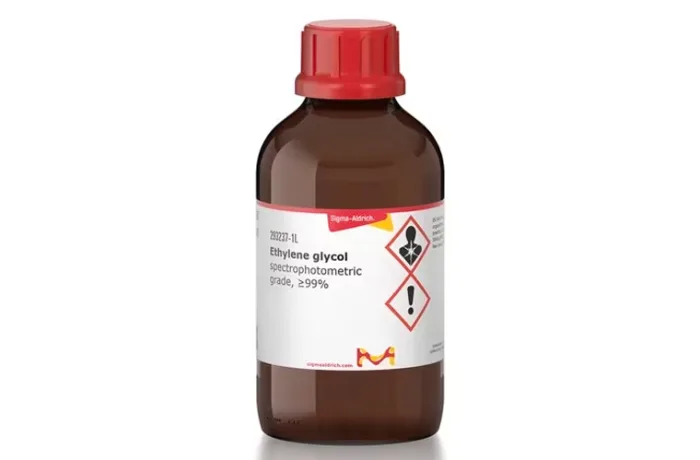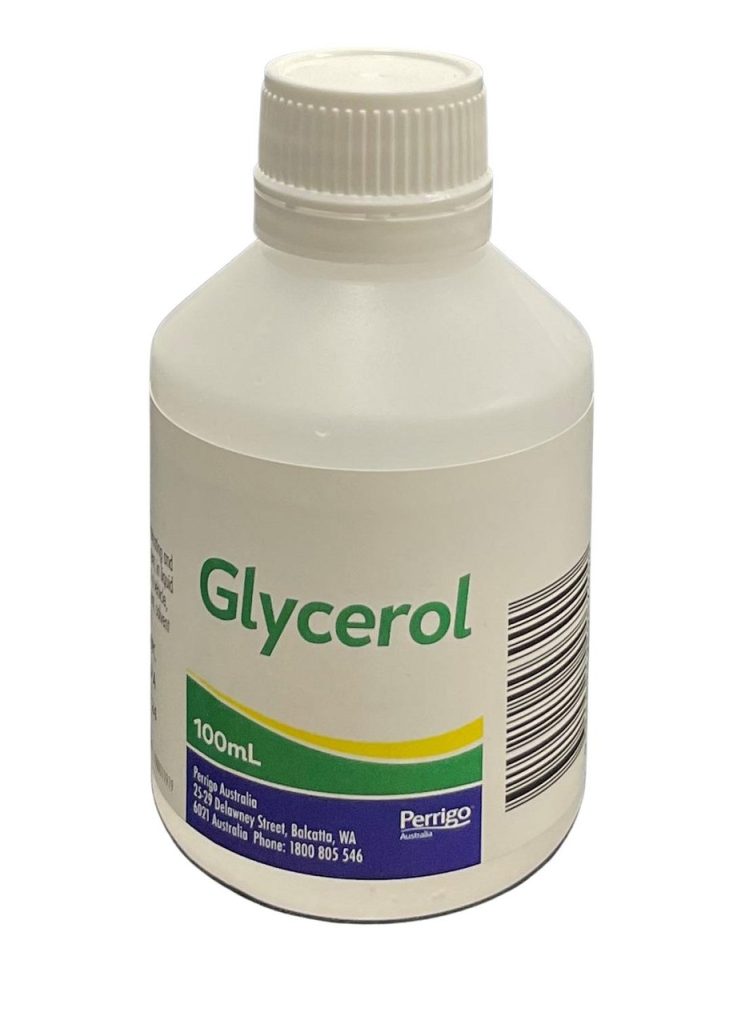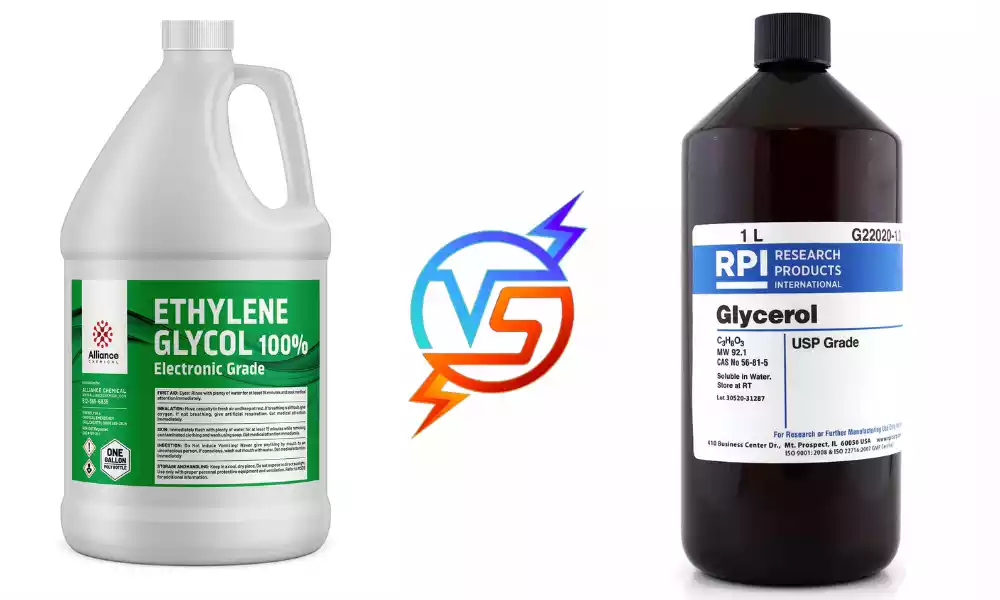Ethylene Glycol and Glycerol have an apricot-like flavor and are both colorless, clear, non-odorless liquids at room temperatures. Ethylene Glycol along with Glycerol comprise two organic substances that have diverse properties and uses.
Ethylene Glycol, which has the molecular formula C2H6O2, is an odorless, colorless liquid. It is widely used in antifreeze and cooling solutions because of its outstanding heating properties. It can be harmful to animals and humans when it is consumed.
Glycerol, also known as glycerin has a molecular formula of C3H8O3 which is a dense sweet-tasting liquid. It is extensively used in cosmetics, pharmaceuticals, and in the food industry for its humectant and thickening agent. Glycerol is not toxic and biodegradable so it is a good option for a variety of applications.
What is Ethylene Glycol?
Ethylene Glycol, whose chemical formula of C2H6O2, is an essential organic compound that is known for its usage in industrial and automotive applications. It is a colorless, odorless, and sweet-tasting liquid with two hydroxyl groups.

This makes it diol. Its main purpose is an antifreeze and a coolant in internal combustion engines, which prevents freezing at cold temperatures and overheating in hot temperatures. Ethylene Glycol is coveted for its outstanding heat transfer properties as well as its ability to reduce temperatures of freezing in the event of mixing and protect engine components from damage caused by frost.
While it’s an excellent cooling agent, it is important to remember that Ethylene Glycol can be extremely harmful when consumed, and poses significant health hazards. Within your body, it could be converted into toxic byproducts, leading to extreme kidney damage, poisoning, and in extreme cases even death. In the end, it is a must to be handled with care and disposal in automobile and industrial situations.
What is Glycerol?
Glycerol, also called Glycerin is a multifaceted and biodegradable organic chemical compound with the chemical formula C3H8O3. It is an uncolored, clear flavorless, odorless, and sweet-tasting liquid. Glycerol is appreciated for its many applications across different industries.
In the field of medicine and pharmaceuticals, it functions as an agent for solvents, and sweetening agents and is a constituent in oral and suppositories. The personal and cosmetic healthcare industry frequently utilizes glycerol to help with its humectant properties.

It helps to retain moisture in hair and skin products. It is also used for food products as a preservative, sweetener, and moisture-retaining agent in a variety of food items.
One of its most distinctive characteristics is its non-toxic nature which makes it safe for consumption by humans and for use in a variety of products. Glycerol’s versatility is extended to industrial applications, in which it plays an important role in the creation of chemical compounds, such as nitroglycerin.
It helps in maintaining the moisture levels of tobacco products used in the industry. Glycerol’s security and versatility have made it an extremely popular and extensively used chemical in a variety of industries.
What is the chemical structure of Ethylene Glycol and Glycerol
The chemical structure for Ethylene Glycol as well as Glycerol are as follows:
Ethylene Glycol (C2H6O2): Ethylene Glycol is a basic linear molecular structure that has 2 hydroxyl (OH) groups joined to two carbon chains. The chemical structure is described as follows:
HO-CH2-CH2-OH
In this case is where”HO” represents the hydroxyl group “HO” represents the hydroxyl group, while”-CH2-” represents the methylene group “-CH2-” represents the group of methylene (CH2) group. it repeats the structural elements.
Glycerol (C3H8O3): Glycerol also referred to as Glycerin, has an intricate molecular structure consisting of 3 carbon atoms. It is composed of 3 hydroxyl (OH) groups. Its chemical formula is Glycerol is shown as follows: HO-CH2-CHOH-CH2-OH
In this structure, the “HO” represents the hydroxyl group, while”CH2-” represents the hydroxyl group, and “-CH2-” and “-CHOH-” are groups of methylene (CH2) and the hydroxymethylene (CHOH) groups as well as the hydroxymethylene (CHOH) and methylene (CH2) groups. Glycerol’s structure is comprised of three repeating units that give it the characteristic triol character.
Physical Properties
Ethylene Glycol:
- State at room temperature: Ethylene Glycol is an odorless, colorless substance at room temperatures as well as normal atmospheric pressure.
- Melting Point: It has a melting temperature of -12.9degC (8.8degF) which is a very effective antifreeze under cold conditions.
- Boiling point: Ethylene Glycol can be boiled to 197.3degC (387.1degF).
- Density: Its density is around 1.113 grams per cubic centimeter at 20 degrees Celsius (68degF).
- Solubility Ethylene: Glycol can be found in high amounts of ethanol, water, and acetone. It forms homogeneous and clear solutions.
Glycerol:
- State at room temperature: Glycerol is a colorless liquid, odorless, dense, and viscous liquid that is at the temperature of the room and normal atmospheric pressure.
- Melting Point: Its Melting Point is Glycerol. is a very high melting temperature of 18.2degC (64.8degF).
- Boiling: Point is boiled at a higher temperature than Ethylene Glycol which has a boiling point being 290degC (554degF).
- Density Glycerol: Density Glycerol is a dense substance with a concentration of about 1.261 G/cm3 at 20degC (68degF).
- Solubility: Glycerol is extremely water-soluble. It can be miscible when mixed with water, in any proportion, creating clear solutions.
The manufacturing process of Ethylene Glycol and Glycerol?
Manufacturing Process of Ethylene Glycol:
- Oxidation and decomposition of Ethylene: Ethylene, one of the hydrocarbons, is oxidized with oxygen or air with the help of a catalyst. Typically, it is platinum or silver oxide. The result is ethylene oxide.
- The process of hydrating Ethylene Oxide: Ethylene oxide is then in hydrated form through the addition of water with catalyst, typically a strong acid or base. The reaction results in Ethylene Glycol.
- Cleansing: This resulting Ethylene Glycol is refined and purified to eliminate impurities, water and other byproducts. The result is the highest purity Ethylene Glycol.
Manufacturing Process of Glycerol:
- Saponification or hydrolysis of fats and oils: Glycerol is usually one of the byproducts of the chemical hydrolysis (saponification) of oils and fats. Through this method, oils and fats are coupled by an alkali (e.g. sodium hydroxide) to break the bonds between ester and water that result in glycerol and fat acids (soap).
- Transesterification: The other method of transesterification involves the transformation of fats as well as oils using ethanol or methanol which results in biodiesel and crude Glycerol. This crude glycerol gets further refined to get pure Glycerol.
- Cleansing: This crude Glycerol undergoes purification processes to eliminate impurities, such as water and other pollutants which result in refined Glycerol that is suitable for many applications.
Comparison between Ethylene Glycol and Glycerol
Here’s a comparison chart highlighting the differences between Ethylene Glycol and Glycerol in various aspects:
| Aspect | Ethylene Glycol | Glycerol (Glycerin) |
|---|---|---|
| Chemical Formula | C2H6O2 | C3H8O3 |
| Toxicity | Highly toxic if ingested, can be lethal | Non-toxic and safe for consumption |
| Odor and Taste | Odorless and sweet-tasting | Odorless and sweet-tasting |
| Physical State | Liquid at room temperature | Thick, viscous liquid at room temp. |
| Melting Point | -12.9°C (8.8°F) | 18.2°C (64.8°F) |
| Boiling Point | 197.3°C (387.1°F) | 290°C (554°F) |
| Biodegradability | Limited biodegradability | Biodegradable and environmentally friendly |
| Common Uses | Antifreeze, coolant, deicing agent, heat transfer fluid | Cosmetics, pharmaceuticals, food, tobacco, explosives |
| Impact on the Environment | Toxic and can harm ecosystems and water sources | Biodegradable and less harmful to the environment |
| Metabolism in the Body | Metabolizes into toxic byproducts | Metabolizes as a part of normal metabolic processes |
| Skin and Hair Care | Not typically used in personal care products | Commonly used in skincare and hair care products |
| Health Risks | Causes severe poisoning and organ damage if ingested | Generally well-tolerated and safe for use |
| Regulatory Concerns | Strict regulations due to toxicity | Generally considered safe and less regulated |
What are the most common uses of Ethylene Glycol and Glycerol?
Ethylene Glycol:
- Industrial Applications: It’s employed as an energy transfer fluid in industrial processes, like manufacturing and HVAC systems, because of its superior thermal properties.
- The Deicing agent: Ethylene Glycol is employed to deice runways and aircraft at airports in order to stop the formation of snow and ice.
- Hygroscopic Agent: It’s utilized in laboratories to regulate levels of humidity as well as to act as a desiccant agent to ensure the dryness of the environment.
Glycerol:
- Food and Beverage Industry: Glycerol is utilized as a sweetener in many food items such as baked products, confectionery, and foods that are low in calories.
- Pharmaceuticals: It functions as a solvent and base for different pharmaceutical preparations, such as cough syrups and oral medicines.
- Industries of Tobacco: Glycerol is used in tobacco products to preserve levels of moisture, which improves the shelf quality and texture of tobacco.
- Explosives: It’s one of the components in the manufacturing of nitroglycerin which is a highly explosive compound.
Is Glycol and Glycerol toxic to humans?
Glycol, especially Ethylene Glycol is harmful to animals and humans when consumed. Ethylene Glycol is recognized to be metabolized within the body, resulting in harmful byproducts, such as Oxalic acid. This can result in serious health issues like kidney damage and, in some instances even death.
Consuming even a small amount of Ethylene Glycol could trigger symptoms like nausea stomach pain, vomiting and dizziness. It is therefore essential to take care to handle Ethylene Glycol with care and ensure that it’s not inhaled or exposed to the skin.
However, Glycerol is considered non-toxic and safe for consumption by humans. It is used extensively in many applications, including cosmetics, pharmaceuticals, and food products, all without creating significant health risks.
Glycerol is a well-tolerated substance and rarely causes adverse reactions when used in a responsible manner. However, it is important to adhere to the recommended use guidelines and avoid consumption that is excessive.
The Impact of Ethylene Glycol and Glycerol on the Human Body
Ethylene Glycol:
- Toxicity Ethylene: Glycol can be extremely toxic for humans if it is consumed. It is processed in the liver, causing harmful compounds, such as the acid oxalic, which could cause serious health problems.
- Signs and symptoms of Ethylene Glycol Poisoning: Consuming even a small amount of it can cause symptoms like nausea stomach pain, vomiting headache, dizziness, and stomach pain. As the poisoning gets worse it can cause more serious symptoms such as seizures, kidney damage, and even death can occur.
- The treatment: Ethylene Glycol poisoning requires immediate medical treatment. Treatment usually involves the administration of an antidote that counteracts the toxic effects as well as support care.
Glycerol:
- Non-toxic: Glycerol is considered to be non-toxic and safe for consumption by humans. It doesn’t pose the same health hazards as Ethylene Glycol.
- Metabolism: Glycerol is processed in our body by normal metabolic pathways and is component of a variety of biochemical processes.
- Health Effects: Glycerol is generally well-tolerated when it is used in the right amounts. It may even be beneficial in certain applications, like cosmetic products for skin, as it can help retain moisture in the skin.
Environmental Effects of Ethylene Glycol and Glycerol
Ethylene Glycol:
- Groundwater contamination: Ethylene Glycol may leach into groundwater, which could affect drinking water sources.
- Impact on wildlife: The impact on wildlife can be damaging to aquatic animals and can cause negative impacts on ecosystems of aquatic life.
- Environmental Regulations: Due to its environmental impacts there are strict regulations concerning the disposal, handling and spill control of Ethylene Glycol across a wide range of areas.
Glycerol:
- Biodegradability: Glycerol’s biodegradability makes it more sustainable because it breaks in non-toxic waste products.
- Lower environmental impact: When Glycerol gets into the environment there is less chance of causing lasting harm to ecosystems and water sources.
- More secure to use Aquatic Living: Glycerol is generally less than harmful to aquatic organisms and is suitable for use in sensitive environments.
Summary
Ethylene Glycol as well as Glycerol is a distinct organic compound. Ethylene Glycol, which has the formula C2H6O2, is a non-colorless smellless liquid, which is popular for its function as an antifreeze for vehicles and cooling agents because of its superior heating properties.
But, it is poisonous ingestion. Glycerol, whose formula is C3H8O3 is a sweet-tasting thick liquid that is widely used in cosmetics, pharmaceuticals, and in the food industry to act as a thickening and humectant agent.
Glycerol is biodegradable and non-toxic so it is a better option for a variety of applications. Both substances play a crucial role in various industries and industries, with Ethylene Glycol focusing on temperature regulation, and Glycerol on the retention of moisture.



